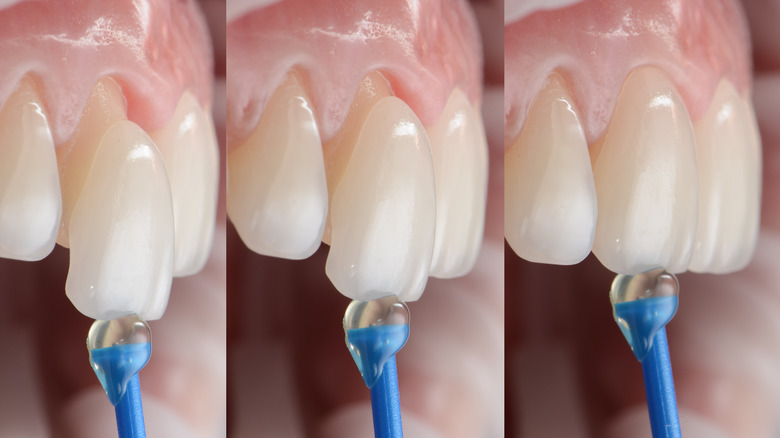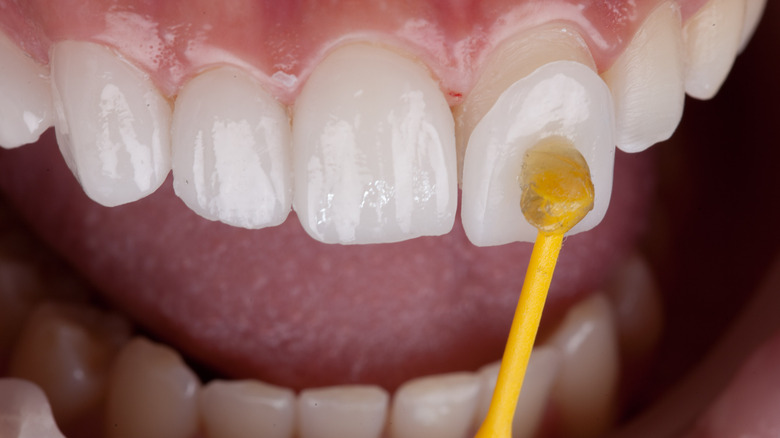Veneers Versus Crowns: What's The Difference?
For many people, appearance plays an important role in their professional and private success, and it helps them make a great first impression. A well-groomed appearance provides self-confidence and attracts attention, and a great smile can help, according to a 2012 survey conducted by the American Academy of Cosmetic Dentistry. About 45% of respondents agreed that a smile is one of the most attractive features. Furthermore, 80% showed a willingness to invest in their smile to safeguard their appearance. It's no surprise that cosmetic dentistry has become more popular than ever.
Dentistry is no longer just about treating or extracting teeth. Today, cosmetic dentistry (also known as aesthetic dentistry) is a path many choose to improve their appearance. This is equivalent to cosmetic surgery, but in this case, for teeth. Cosmetic dental treatments include tooth-colored fillings, crowns, veneers, implants, bridges, and teeth whitening, per WebMD.
When choosing between veneers and crowns, the decision might be hard. They both deal with dental restoration but still have their differences, according to Healthline. If you're stuck, here are the main differences between veneers and crowns.
What's the difference between veneers and crowns?
According to a 2009 study published in the journal European Academy of Esthetic Dentistry, crowns and veneers differ significantly in their treatment strategies and outcomes. Veneers are thin, tooth-colored shells attached to the surface of the tooth to disguise a discolored or chipped tooth (via MedicalNewsToday). Some people choose to apply veneers over a specific tooth, while others opt for an entire row. The Cleveland Clinic highlights four different veneer types, including composite, porcelain, no prep, and removable veneers. The National Health Service (NHS) likens the veneer fixing procedure to how nail technicians apply false fingernails. Dentists start by drilling the tooth portions before fitting a thin layer of porcelain or composite materials, per NHS.
Crowns, on the other hand, are tooth-shaped caps placed over a damaged tooth to preserve its shape, size, and strength and enhance its aesthetic features (via WebMD). The crown implant process begins with the dentist removing the outer surface of the tooth to be fixed. The amount of surface removed will influence the size of the crown to be fitted, according to the Mayo Clinic.
Which one should you opt for?
Most people opt for veneers because they're long-lasting, better at hiding tooth decay and discoloration, and make the teeth appear perfect, according to Healthline. However, the source also adds that the lengthy process requires multiple visits. The dentist will first take a mold of your teeth, which is then sent to a laboratory that'll prepare your veneers from the mold. This takes around 2-4 weeks, per Healthline.
The surgical process for crown implants is also extensive and can be an ideal restoration for broken or weeks teeth due to decay or a very large filling (via Mayo Clinic). According to the Cleveland Clinic, most crown surgical sessions span two visits, but you can request a same-day completion if the facility has the appropriate tools.
Ultimately, the right choice depends on your goal. Healthline states that if your teeth are cracked, or you have a large filling or root canal, crowns might be the better option. However, veneers come in handy when your restoration objective is for cosmetic purposes, per Healthline. While veneers and crowns are tried-and-tested dental solutions, they may not work for everyone. It's important to discuss your chances and options with a certified dentist before making your final choice.



